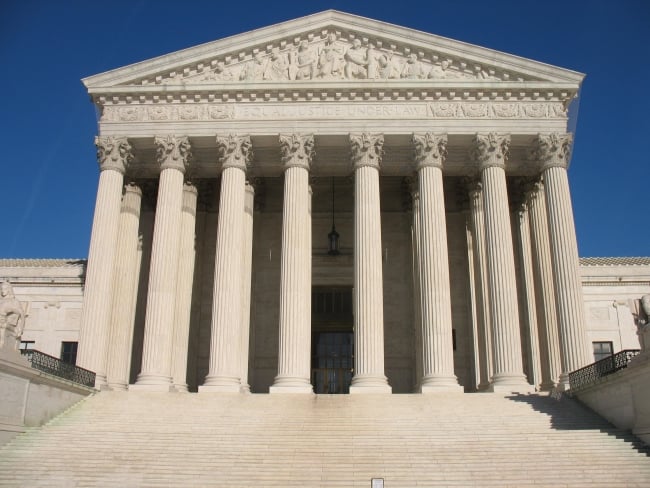You have /5 articles left.
Sign up for a free account or log in.

Kjetil Ree, CC BY-SA 3.0, via Wikimedia Commons
In the lead-up to the 2023 Supreme Court ruling in Students for Fair Admissions (SFFA) v. Harvard University and SFFA v. University of North Carolina at Chapel Hill, which ended race-conscious admissions in higher education, the founder of SFFA, Edward Blum, and his allies argued that ending affirmative action would supposedly remove a racial barrier to Asian American access to highly selective colleges and universities. Many Asian Americans mistakenly assumed that prioritizing diversity in college admissions benefited Black, Latinx and Native American students at the expense of Asian American applicants. They believed Blum and SFFA’s claims that efforts to increase campus diversity marginalized Asian Americans—a socioeconomically and ethnically diverse population.
Now that the latest enrollment numbers for the first year after the Supreme Court’s decisions have been released, it is clearer than ever that those myths about affirmative action were untrue. Although anti-Asian racism is a problem, ending the consideration of race in admissions processes has not provided the jump in enrollments predicted by Blum and SFFA.
Over the past decade, many Asian Americans came to believe that affirmative action programs at highly selective colleges and universities disadvantaged them. This concern is especially pronounced at the highly selective institutions where affirmative action policies are often contested. At such universities, Asian Americans constitute a much larger proportion of the student body compared to their share of the overall population. At Harvard University, they represent 37 percent of the Class of 2027—the last class admitted before the overturn of affirmative action. About 7 percent of the total population in the United States identifies as Asian American. Consequently, many assume that Asian Americans as a group are not in need of affirmative recruitment to enhance diversity on campus.
As selective colleges and universities have released demographic summaries for the Class of 2028 in dribs and drabs, it has become clear that researchers’ warnings that ending race-conscious admissions could harm Asian Americans without significant benefits are coming true.
Research foretold that dismantling affirmative action might produce insignificant enrollment gains (less than two percentage points) for Asian Americans. In this first fall after the SFFA ruling, Cornell, Harvard and Stanford Universities all saw generally no significant change in the proportion of Asian Americans enrolled, which stayed flat at Harvard and increased by one percentage point at Stanford and two percentage points at Cornell. At Duke, Princeton and Yale Universities, Asian American enrollment declined. Over all, the data was mixed and showed no clear trends. Just as researchers predicted, eradicating affirmative action did not significantly benefit Asian Americans.
As we wrote in the amicus brief submitted to the Supreme Court by 1,241 social scientists in support of diversity, individualized and race-conscious holistic admissions practices affirmed the talent found among the diversity of Asian American and other students hoping to attend the nation’s most exclusive institutions.
Race-conscious admissions allowed selective colleges and universities, which consider a wide array of student characteristics above and beyond academic qualifications, to lessen the negative effects of a myriad of factors that generally privilege white and wealthy students. These factors include preferences for the children of alumni, geographic diversity and student athletes—all of which privilege white applicants over Asian Americans and other students of color. Without an analysis of race in the admissions decision-making process, such elements can explain the mixed outcomes in Asian American enrollments and declines in Black, Latinx and Native students last fall.
Blum and SFFA have recycled their old playbook by sending threatening letters to Duke, Princeton and Yale, claiming anti-Asian discrimination because of the small decline in Asian American enrollment at those three universities. The embedded and racist assumption is that non-Asian students of color cannot compete with white and Asian American students when it comes to intelligence. But variations in test scores are not an indication of variation in intelligence across groups; instead, group differences in average test scores highlight systematic discrimination in educational opportunities. And let’s not forget that even before the SFFA lawsuit, race was not the primary or only factor considered in admissions decisions.
The latest threats by Blum and SFFA ring hollow, especially when they unsuccessfully sued the United States military academies, claiming that their race-conscious admissions practices have resulted in a “preference for Asian candidates” over white applicants. In 2023, the Supreme Court exempted the military academies from its ruling, effectively allowing them to continue practicing race-conscious admissions to pursue the “distinct interests that military academies may present.” The majority of the court was convinced by a brief submitted to them by military leaders arguing that racial diversity is “essential to meet today’s security challenges.” In December, a federal court reaffirmed that stance, rejecting SFFA’s attempt to argue that racial considerations are no longer relevant. Attacking Asian American leadership in U.S. military academies shows that SFFA’s agenda has never been in support of Asian American rights.
The bigger story in the most recent enrollment numbers is the declines in Black and Latinx students and increases in white student enrollments. Although talent is found equally across racial lines, high-quality educational opportunities are not equitably available. To question this basic fact is to accept the racist premise that assumes Asian Americans are more deserving of a place at Harvard or other elite universities because they are smarter than other groups or care more about education than non–Asian American people of color. There is no credible evidence to suggest this.
The only way to advance is together. Let’s not get played again.




